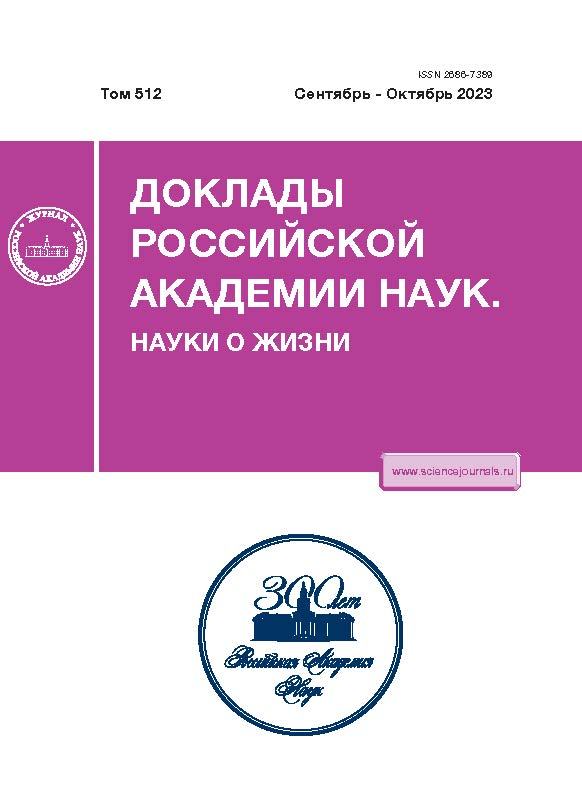SLEEP WITH OPEN EYES IN TWO SPECIES OF DEER, THE INDIAN SAMBAR (RUSA UNICOLOR) И SIKA DEER (CERVUS NIPPON)
- Autores: Lyamin O.I.1,2,3, Siegel J.M.3, Nazarenko E.A.1,2, V M.2, Rozhnov V.V.1,2
-
Afiliações:
- A.N. Severtsov Institute of Ecology and Evolutions of the Russian Academy of Sciences
- Joint Russian-Vietnam Tropical Research and Technological Center
- University of California in Los Angeles
- Edição: Volume 512, Nº 1 (2023)
- Páginas: 480-485
- Seção: Articles
- URL: https://rjpbr.com/2686-7389/article/view/651077
- DOI: https://doi.org/10.31857/S2686738923700373
- EDN: https://elibrary.ru/SQCYEK
- ID: 651077
Citar
Texto integral
Resumo
The relationship between postures, sleep stages and eye state was established in two species of deer, the Indian sambar (Rusa unicolor) and sika deer (Cervus nippon), based on video recording. In both species, the state of rest or behavioral sleep was recorded in the sternal position, holding the head above the ground, and in the lateral position, with the head resting on the croup or on the ground. Rest accounted for at least 80% of the time in these positions. Based on behavior criteria a substantial portion of rest represented slow-wave sleep. Episodes of rapid eye movements (REM sleep) were recorded in the lateral position. They did not exceed 2 min. When the deer were in the sternal posture, they kept their eyes open most of the time: on average 96% of the time in sambars and 82% in sika deer. Episodes of the open eye in this posture lasted up to 8.4 min in sambars and up to 3.3 min in sika deer. In the lateral position, such episodes were 4 and 1.5 times shorter. Sleeping with open eyes in ungulates may be an important mechanism of maintaining vigilance.
Palavras-chave
Sobre autores
O. Lyamin
A.N. Severtsov Institute of Ecology and Evolutions of the Russian Academy of Sciences; Joint Russian-Vietnam Tropical Research and Technological Center; University of California in Los Angeles
Email: oilyamin@yahoo.com
Russian Federation, Moscow; Vietnam, Hanoi; USA, Los Angeles
J. Siegel
University of California in Los Angeles
Email: oilyamin@yahoo.com
USA, Los Angeles
E. Nazarenko
A.N. Severtsov Institute of Ecology and Evolutions of the Russian Academy of Sciences; Joint Russian-Vietnam Tropical Research and Technological Center
Email: oilyamin@yahoo.com
Russian Federation, Moscow; Vietnam, Hanoi
Mnh V
Joint Russian-Vietnam Tropical Research and Technological Center
Email: oilyamin@yahoo.com
Vietnam, Hanoi
V. Rozhnov
A.N. Severtsov Institute of Ecology and Evolutions of the Russian Academy of Sciences; Joint Russian-Vietnam Tropical Research and Technological Center
Email: oilyamin@yahoo.com
Russian Federation, Moscow; Vietnam, Hanoi
Bibliografia
- Siegel J.M. // Nature Rev Neurosci. 2009. V. 10. № 10. P. 747–753.
- Lyamin O.I., Manger P.R., Ridgway S.H. et al. // Neurosci Biobehav Review. 2008. V. 32. №. 8. P. 1451–1484.
- Lyamin O.I., Mukhametov L.M., Siegel J.M. // Curr Opin Neurobiol. 2017. V. 44. P. 144–151.
- Ruckebusch Y. // Anim Behav. 1972. V. 20. P. 637–643.
- Лямин О.И., Сигал Д.М., Евсигнеев Р.В. и др. Доклады Российской академии наук. Науки о жизни. 2021. Т. 500. № 1. С. 437–442.
- Lyamin O.I., Siegel J.M., Nazarenko E.A., Rozhnov V.V. // Sleep. 2022. V. 45. № 7. P. zsab199.
- Pigarev I.N., Fedorov G.O., Levichkina E.V., et al. // Exp Brain Res. 2011. V. 210. P. 131–142.
- Lesku J.A., Meyer L.C., Fuller A. et al. // Ostriches sleep like platypuses. PLoS One. 2011. V. 6. № 8. P. e23203.
- Кузнецов Г.В. // Млекопитающие Вьетнама. 2006. Москва. КМК. С. 426
- Sokolov V.E., Mukhametov L.M., Prikhod’ko V.I., et al. // Proceeding of the Academy of Sciences of USSR. 1988. V. 302. № 4. P. 1005–1009.
- Williams D.C., Aleman M., Holliday T.A. et al. // J. Vet Intern. Med. 2008. V. 22. № 3. P. 630–638.
- Davimes J.G., Alagaili A.N., Bhagwandin A., et al. // Sleep. 2018. V. 41. № 5:zsy038.
- Malungo I.B., Gravett N., Bhagwandin A., et al. // IBRO Neuroscience Reports. 2021. V. 10. P. 142–152.
- Burger A.L., Fennessy J., Fennessy S., Dierkes P.W. // Ecol Evol. 2020. V. 10. P. 2917–2927.
- Brügger R.K., Willems E.P., Burkart J.M. // Animal Behaviour. 2023. V. 196. P. 183–199.
Arquivos suplementares












